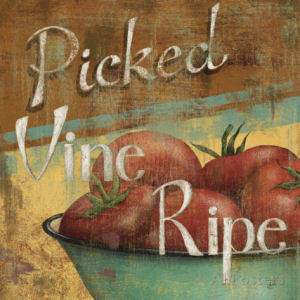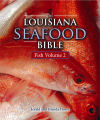
HOME
INTRO
SYMBOLS
ALMANAC
ECONOMY
GEOGRAPHY
STATE MAPS
PEOPLE
FORUM
NEWS
COOL SCHOOLS
STATE QUIZ
STATE LINKS
BOOK STORE
MARKETPLACE
GUESTBOOK
CONTACT US


You may double left-click on a word on this page to retrieve its definition. Tweet Follow
Louisiana State Vegetable Plant

State Representative Nita Rusich Hutter
On March 21, 2003, State Representative Nita Rusich Hutter, representing District 104, St. Bernard Parrish, prefiled House Bill No. 633 in the Louisiana House of Representatives.
House Bill No. 633 proposed that the Creole tomato be designated the official "vegetable plant" of Louisiana.
Hutter's bill did not name a particular variety (cultivar) for official recognition.
On March 31, 2003 the bill was referred to the House Judiciary Committee where it received unanimous approval on May 22, 2003.
On May 27, 2003 House Bill NO. 633 was passed by a vote of the full House of Representatives (96-0). It was ordered on to the Louisiana Senate for that chamber's consideration.

Louisiana State Vegetable Plant: Creole Tomato
Photographs, prints, posters
Referred to the Senate & Governmental Affairs Committee on May 28, it was here that the sweet potato entered the discussion.
We are not certain of the circumstances that led to inclusion of the sweet potato in this piece of legislation, but as approved by the committee, House Bill No.633 had been amended to include the designation of the sweet potato as Louisiana's official state vegetable along with the Creole tomato as the official state vegetable plant.
Put to a vote before the full Senate, House Bill NO.633, as amended by the Senate committee was approved overwhelmingly (28-2) on June 16, 2003.
The House of Representatives agreed (89-11) to the Senate amendment on June 18, 2003.
Signed by the President of the Senate and the Speaker of the House of Representatives the amended House Bill No. 633 was forwarded to the governor for her approval, three days later, on June 21st.
Governor Kathleen Babineaux Blanco signed House Bill No. 633, Act No. 857, on July 1, 2003 making the Creole tomato the official state vegetable plant and the sweet potato the official state vegetable.
The law went into effect on August 15, 2003.
ENROLLED
ACT NO. 857
Regular Session, 2003
HOUSE BILL NO. 633
BY REPRESENTATIVE HUTTERAN ACT
To enact R.S. 49:170.8, to designate the Creole Tomato as the state vegetable plant; to designate the sweet potato as the state vegetable; and to provide for related matters.
Be it enacted by the Legislature of Louisiana:
Section 1. R.S. 49:170.8 is hereby enacted to read as follows:
§170.8. State vegetable plant; state vegetable
A. There shall be an official state vegetable plant. The official state vegetable plant shall be the Creole Tomato. Its use on official documents of the state and with the insignia of the state is hereby authorized.
B. There shall be an official state vegetable. The official state vegetable shall be the sweet potato. Its use on official documents of the state and with the insignia of the state is hereby authorized.
SPEAKER OF THE HOUSE OF REPRESENTATIVES
PRESIDENT OF THE SENATE
GOVERNOR OF THE STATE OF LOUISIANA
APPROVED:
Page 1 of 1
CODING: Words in struck through type are deletions from existing law; words underscored are additions.
What is a Creole tomato?
In fact, the Louisiana State University Agricultural Center (AgCenter) researcher Teme Hernandez released a tomato cultivar named "Creole" in 1969. Reportedly, this tomato was an indeterminate (vine as opposed to bush growth style) variety bearing medium-size, deep red fruit and exhibited some resistance to fusarium wilt.
Superseded by newer and more disease resistant varieties today, Louisiana State University's AgCenter stopped stocking and maintaining these seeds years ago. From the University's point of view, this cultivar no longer exists.

Louisiana State Vegetable Plant: Creole Tomato
Photographs, prints, posters
According to AgCenter consumer horticulturist Dan Gill, "Although you may see 'Creole' tomato transplants available at the nursery, we really don't know where the growers are getting the Creole tomato seeds and or what these tomatoes actually are. LSU has not produced certified 'Creole' tomato seeds for decades."[1]
Creole tomatoes can more practically be described today as a tomato that is grown under certain climate and soil conditions and is marketed as "Creole" in a traditional fashion. Many different tomato varieties are grown and marketed as Creole tomatoes. In fact, at this point in time any number of cultivars can be labeled a Creole tomato.
In general, Creole tomatoes are grown in hot, humid, southeast Louisiana "river parishes," in the fertile, nutrient rich soil of Mississippi River silt deposits. They are vine ripened, resulting in the best possible flavor.
Traditionally, tomatoes grown in St. Charles, St. John and St. James parishes, beginning in the early 19th century were referred to as Creole tomatoes.
Horticulturist Gill summarizes, "The way Creole is used properly these days is for marketing purposes. Local tomato growers can call their tomatoes "Creole" because they were locally grown in the warm climate and fertile river soils of the area , and because they are grown close to the local market they can be allowed to vine ripen. All of this contributes to a very flavorful tomato. It doesn't matter what cultivar they use." [1]
Louisiana Law
The following information was excerpted from the Louisiana Revised Statutes, Title 49, Section 49:170.11.
TITLE 49.STATE ADMINISTRATION
RS 49:170.11vState vegetable plant; state vegetable
RS 49:170.11
§170.11. State vegetable plant; state vegetable
A. There shall be an official state vegetable plant. The official state vegetable plant shall be the Creole Tomato. Its use on official documents of the state and with the insignia of the state is hereby authorized.
B. There shall be an official state vegetable. The official state vegetable shall be the sweet potato. Its use on official documents of the state and with the insignia of the state is hereby authorized.
Acts 2003, No. 857, §1.
Sources...
[1]Gill, Dan. "Creole Tomatoes?" HelpfulGardener.com. The Helpful Gardener, 5 Apr. 2009. Web. 26 Oct. 2016.
Dan Gill. "Creole Tomato Myths vs. Facts: There Is Not Just One Type of 'Creole'" The Times-Picayune [New Orleans] 20 Mar. 2014: n. pag. Www.nola.com. The Times-Picayune, 20 Mar. 2014. Web. 25 Oct. 2916.
Kathryn Fontenot, and Robert Williams. "Will the Real Creole Tomato Please Stand Up?" ,Louisiana Agriculture Magazine Louisiana Agriculture Magazine 20 July 2016: 20. Print.
Reynolds, Gene. "HCR88 by Representative Gene Reynolds." Louisiana State Legislature. State of Louisiana, 7 May 2015. Web. 14 Oct. 2016.
"RS 49:170.11." Louisiana State Legislature. State of Louisiana, 14 Oct. 2016. Web. 15 Oct. 2016.
Additional Information
State vegetables: Complete list of official state vegetables from NETSTATE.COM.
More symbols & emblems: Complete list of official Louisiana state symbols from NETSTATE.COM.

Louisiana Seafood Bible
Fish: Volume 1
Jerald and Glenda Horst
Louisiana Seafood Bible, Fish: Volume 1, by Jerald and Glenda Horst. 256 pages. Publisher: Pelican Publishing (September 20, 2012)
Whether fried, baked, pan-seared, or grilled, fish fits any plate and is sure to please any crowd. The fifth volume in the Louisiana Seafood Bible Series, this collection offers fish lovers a taste of Louisiana’s freshest catches. An assortment of more than seventy-five home-style dishes is included, such as fish nachos, Louisiana Bouillabaisse, and CenLA Seafood Jambalaya.
More than 280 mouth-watering photos accompany the recipes, giving cooks—from beginners to experts—a glimpse at what their dishes will resemble. Also included are facts about our aquatic friends, discussions on the Louisiana seafood industry, and a fascinating essay following a first-hand account of the life of a fisherman. Each delectable entrée has been home-tested by husband-and-wife-team Jerald and Glenda Horst, who have collected and tested fish recipes for decades.

Louisiana Seafood Bible
Fish: Volume 2
Jerald and Glenda Horst
Louisiana Seafood Bible, Fish: Volume 2, by Jerald and Glenda Horst. 240 pages. Publisher: Pelican Publishing (August 16, 2013)
The final addition to the Louisiana Seafood Bible Series, this more-than-just-a-cookbook picks up where The Louisiana Seafood Bible: Fish Volume 1 left off. From Almond and Macadamia Crusted Fish to Vietnamese Claypot Catfish, there is a seemingly endless supply of delicious fish preparations that are certain to become family favorites. The most unique feature of this book is its glossary, which contains both photographs and a listing of the best cooking methods for one hundred-plus Louisiana fish species. The Louisiana seafood industry is also discussed, complete with a fascinating history of one of northern Louisiana’s commercial-fishing legends. Truly rife with useful information, this is a volume that belongs in every kitchen.

Dutch Oven
Cajun and Creole
Bill Ryan
Dutch Oven Cajun and Creole, by Bill Ryan. 128 pages. Publisher: Gibbs Smith; Spi edition (September 1, 2012)
Bill Ryan serves up some of the finest Cajun and Creole cooking out of a Dutch oven you’ll ever taste! With this cookbook, he shares some of his prize recipes and tips for cast-iron cooking. Give a few of these Louisiana favorites a try: Beignets, Shrimp Creole, Dirty Rice, and Crawfish Etouffee. And, if that doesn’t fit the bill, Grillades and Grits, Cajun Cacciatore, Mardi Gras Rolls, and Lime-Coconut Buttermilk Pie certainly will.
The Omnivore's Dilemma: A Natural History of Four Meals, by Michael Pollan. 464 pages. Penguin Press HC, The (April 11, 2006) The bestselling author of The Botany of Desire explores the ecology of eating to unveil why we consume what we consume in the twenty-first century
In Defense of Food: An Eater's Manifesto, by Michael Pollan. 256 pages. Penguin Press HC, The (2008) In looking toward traditional diets the world over, as well as the foods our families-and regions-historically enjoyed, we can recover a more balanced, reasonable, and pleasurable approach to food. Michael Pollan's bracing and eloquent manifesto shows us how we might start making thoughtful food choices that will enrich our lives and enlarge our sense of what it means to be healthy.

